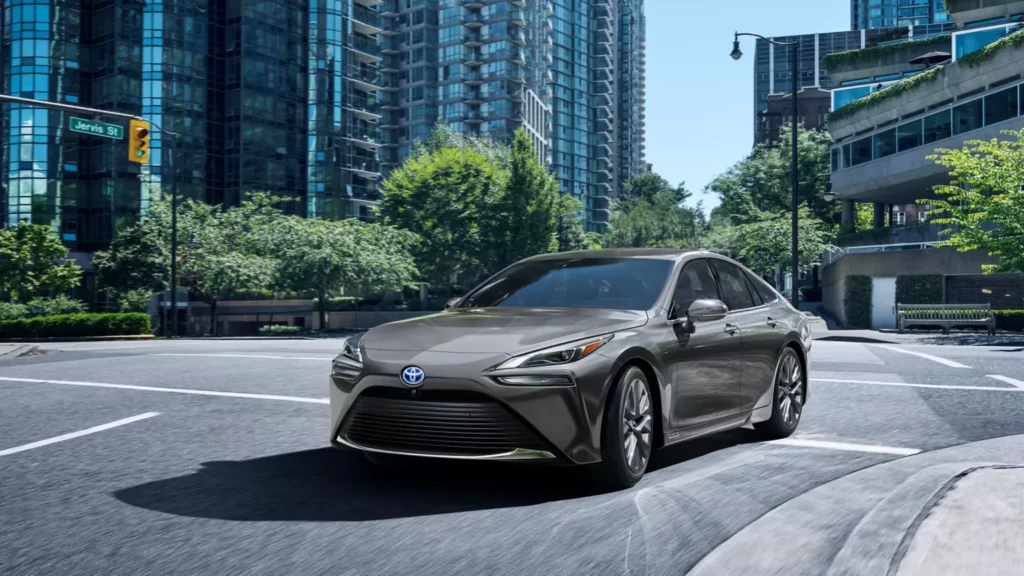Table of Contents
Toyota Mirai Launch in India :
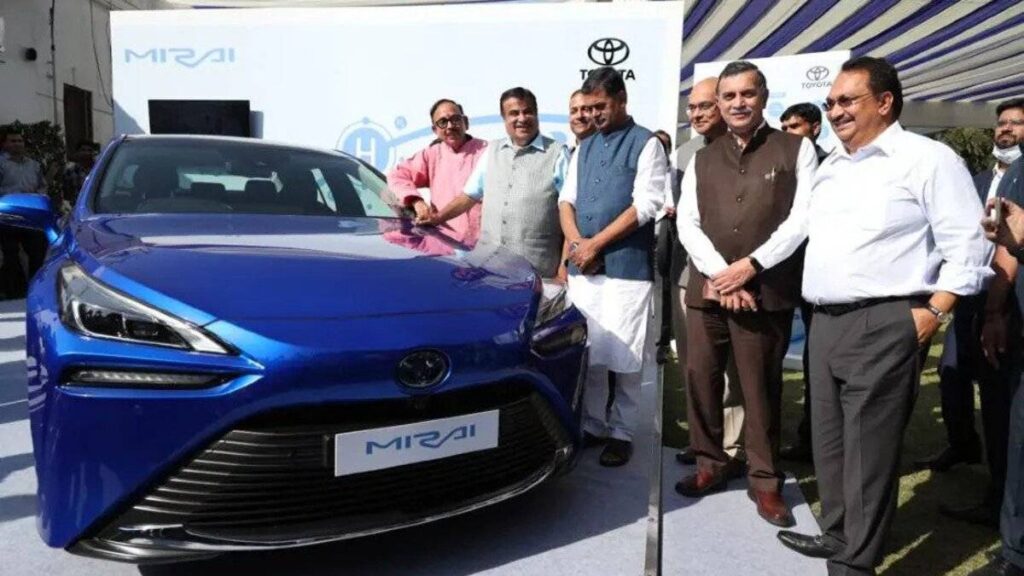
Union Minister of Road Transport and Highways of India, Mr. Nitin Gadkari has launched the first ever hydrogen fuel powered Electric Vehicle in India, the Toyota Mirai 2022, in the second week of March.
Toyota Mirai is a hydrogen fuelled car that are technically named FCEV or Fuel Cell Electric Vehicle. It was already launched in Japan on December,9th,2020. In India the prototype is launched presently for study it in Indian environment and afterwards will be available for sale.
Minister Boards to Parliament in Mirai:
In fact, the Union minister of Road Transport and Highways himself boarded in Toyota Mirai and travels to the parliament. It gives a clear sign of his interest in the green car and the fact that India is taking the transition to electrification of the vehicles from fossil fuelled car very seriously. Recently the hike of the price fossil fuell after the Russia-Ukraine tension has raised many questions about the need of green vehicles sooner than later in India also.
Toyota Kirloskar Motors:
Toyota Kirloskar Motors , in India in collaboration with International Centre for Automotive Technology (ICAT), is conducting a pilot project to study and evaluate the most green car in the world, the FCEV (fuel cell electric vehicle) Toyota Mirai. The project will study the conditions and situations to assess and create an ecosystem to power the adaptibility of hydrogen fuelled cars that are literally zero emission vehicles, in the Indian climate.

According to Mr. Gadkari ,”This is the first of it’s kind project in India that aims to create an ecosystem for such vehicles in the country. He further tweeted “Green Hydrogen can be generated from renewable energy and abundantly available biomass. Introduction and adoption of technology to tap into the Green hydrogen’s potential will play a key role in securing a clean and affordable energy future for India,”.
Car that Emits Nothing but Water:
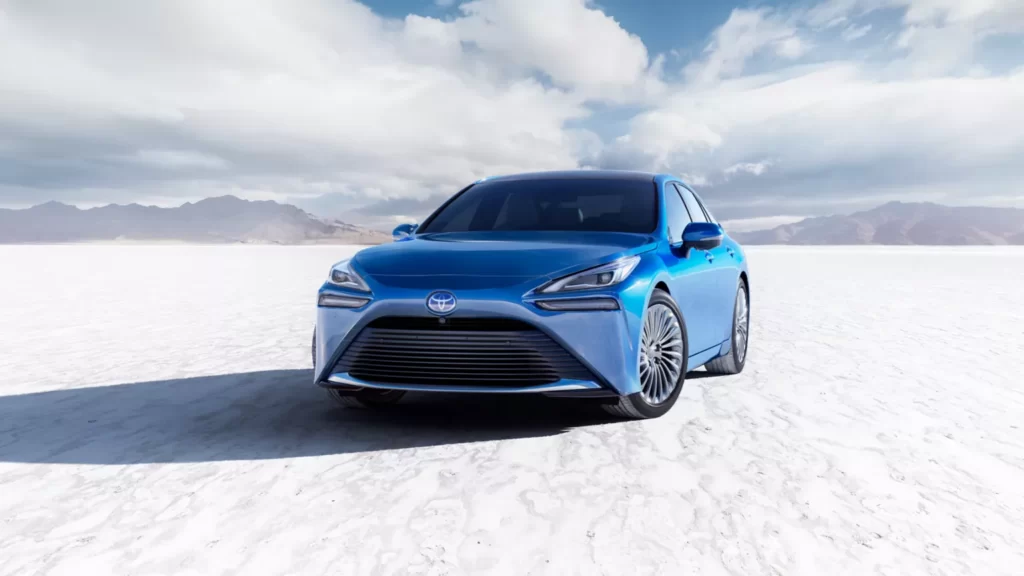
Toyota Mirai is literally a zero emission car. According to Toyota newsroom ” With an advanced powertrain, striking coupe-like design and a luxury interior that’s loaded with technology, the 2022 Toyota Mirai brings the future to drivers today. Recognized by Ward’s Automotive as a 10 Best Engine and Propulsion Systems winner for 2021, the 2022 Mirai is Toyota’s premium zero emission, rear-wheel drive fuel-cell electric vehicle (FCEV)… The 2022 Mirai brings drivers luxury car design and performance, while emitting nothing but water.”
FECV:The detailed analysis:
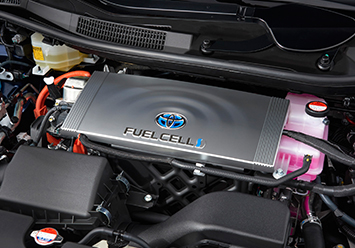
An FCEV is a “plug-less” electric vehicle. There’s no need to charge a big battery. Instead, the FCEV driver simply fills the tank with hydrogen, which only takes about 5 minutes. Here the fuel is not petrol or diesel but compressed Hydrogen gas. An FCEV generates its own electricity onboard from hydrogen, with water as the only emission. Hydrogen is a fuel that can be produced from various energy sources and contributes to be reservation of the global environment and reinforcing energy security.
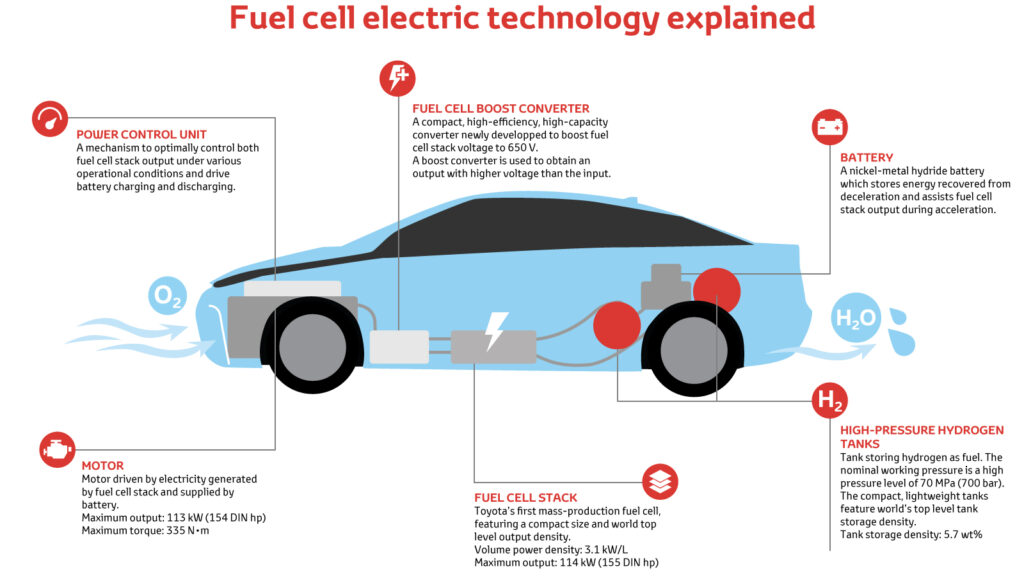
A fuel cell system in the FCEVs combines stored hydrogen with oxygen from the air, and a chemical reaction that produces electric current, and water, which drops out of a hidden vent pipe beneath the car. The hydrogen from the fuel tank will mix into the air that is entering from the intake grille.
A chemical reaction with the oxygen in the air and the hydrogen in the fuel tank will create Electric energy for the Mirai, which will be stored in the Electric Cell Stacks. After the end of this chemical reaction, only water as a substance will be emitted in vapour form that will be cooled and become water drops.
Hydrogen + Oxygen = Electricity + Water.
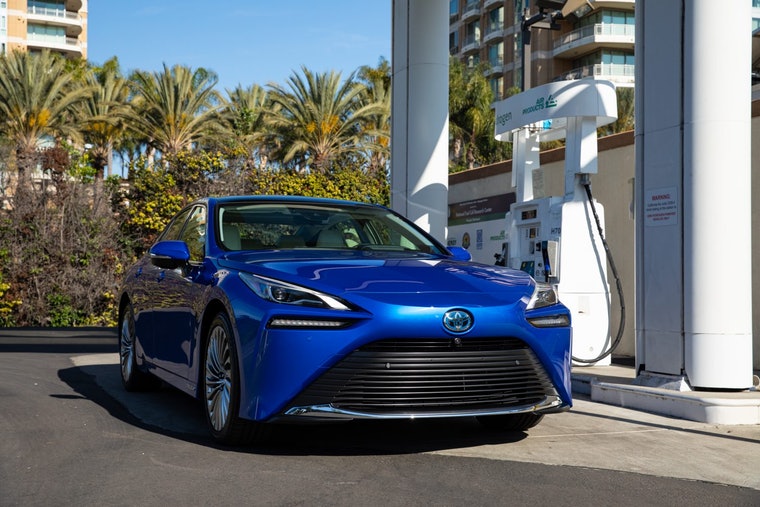
Thus the electricity generated from hydrogen is stored in a Lithium-ion battery to power the car. Mirai is also structured to be powered from it’s ‘regenerative braking system’, ensuring that no energy is wasted even during braking.
The use of hydrogen has progressed in various forms with the aim of creating a low carbon and decarbonized economy and Toyota plans to use fuel cell systems that pursue compact size, efficiency and productivity in the means of mobility that support society including trucks and buses and contribute to the expanded use of hydrogen.
The First Generation Mirai:
The 2011 unveiled Toyota Mirai FCV concept was a bright blue sedan shaped like a drop of water “to emphasize that water is the only substance that hydrogen-powered cars emit from their tailpipes.”
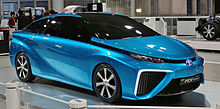
The first generation Toyota mirai was launched in Japan in the year 2014 and the following year in the Europe and the USA. Mirai uses the TFCS (Toyota Fuel Cell System ) technology, which features both fuel cell technology and hybrid technology.
The TFCS is more energy-efficient than internal combustion engines as seen in fossil fuelled cars and emits no co2 at the point of operation or any SOCs (substances of concern) when driven.The refuel takes about 3 to 5 minutes.
The Mirai has a button labeled H2O (water) that opens a gate at the rear, dumping the water vapour that forms from the hydrogen-oxygen reaction in the fuel cell.The exhaust H2O or water volume is 240 mL per 4 km running. Presently, Mirai gives a range of 646km roughly on a single tank of hydrogen fuel – which is almost 5.6kg of Hydrogen gas. Whereas for emission it produces nothing but only water vapour.
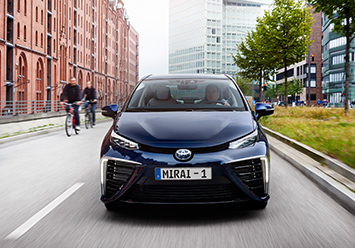
The Second Generation | Toyota Mirai Specs :
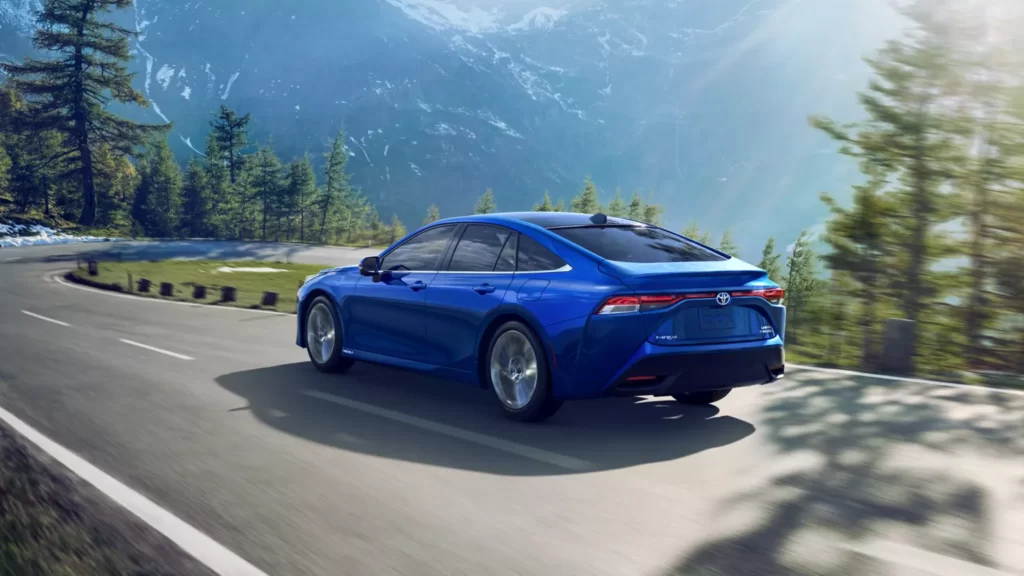
The second generation Mirai is a premium car with a new benchmark set and according to Toyota it will serve as a new departure point for creating a hydrogen based society of the future.
the new Mirai is built on Toyota’s modular GA-L platform enabling improved system packaging and the more spacious 5 seat cabin for the borders.
The second generation Mirai has an extra (third) hydrogen fuel tank that contributes with 30% increase in the cars driving range which is around 650 kilometer.
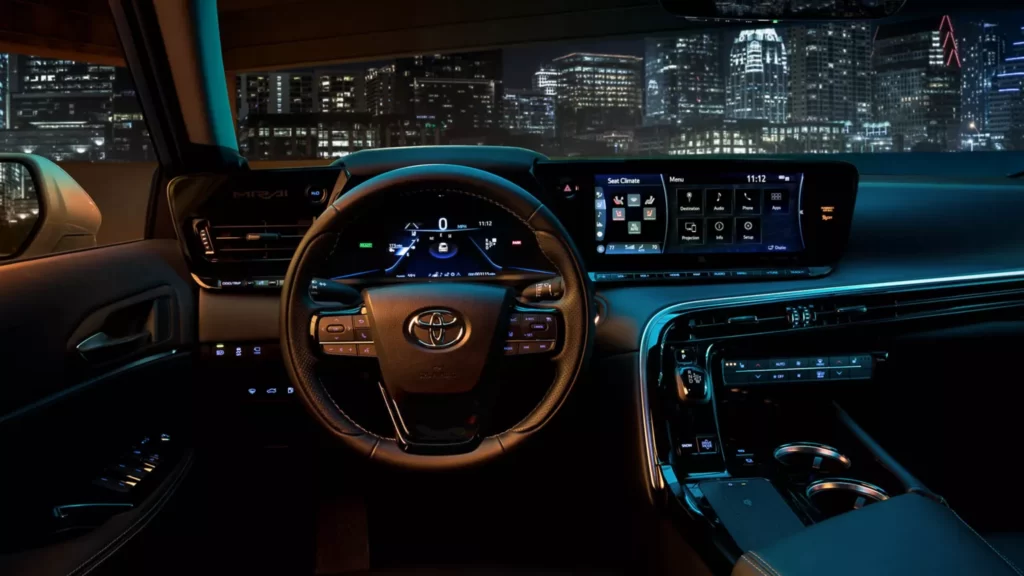
It is completely redesigned with a a significantly improved fuel cell system that reduce the size and weight of all the principal components.
The new Mirai has in it installed a fully revised fuel cell electric powertrain that achieves an ideal 50:50 chasis balance by positioning the fuel cell stack at the front and the battery and the electric motor at the rear contributing more stability and comfort to handle the overall vehicle.
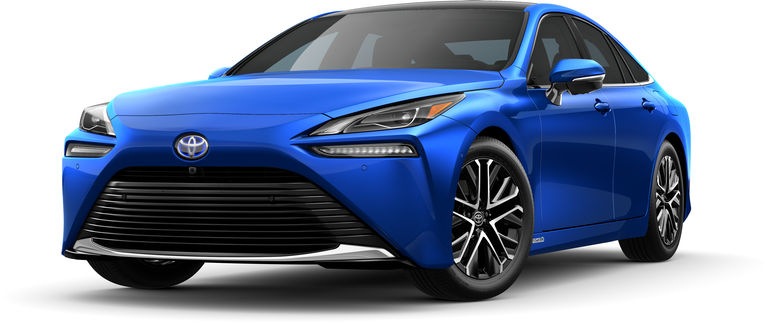
The lithium ion battery pack of the new Mirai is also smaller but more energy dense giving higher output and superior environmental performance. The overall weight is reduced to 44.6 kg and the output has been improved to 31.5 kW × 10 seconds
The Mirai 2022 has been modified to 1470 mm, the wheelbase is increased to 2920 mm, the rear overhang is extended by 85 mm than the earlier version. The overall vehicle length is now 4,975 mm.
Bulletproof Hydrogen Tanks in Mirai :
The sturdiness of Mirai is also a wonder. The rigidity of the body of Mirai has been increased with strategic bracing and reinforcements with the use of lesser screw weldings. it has a new multilink front and rear suspension and overall high suspension rigidity that is more responsive and stable.
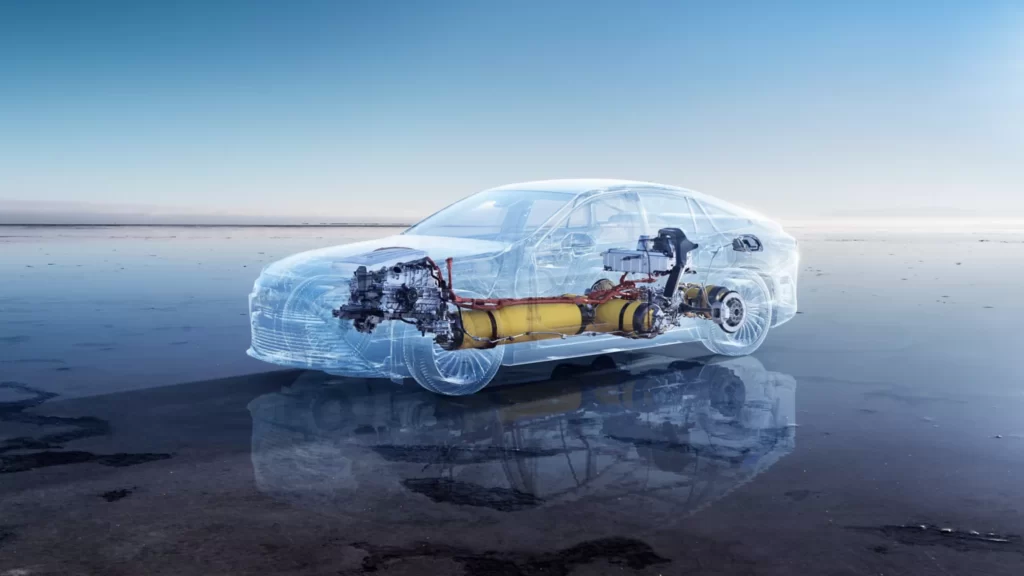
Not only that, the hydrogen fuel tanks in Mirai are also bulletproof. The three carbon-fiber-reinforced tanks in the Mirai hold a total of 11 pounds of hydrogen under 10,000 PSI of pressure. Among the three tanks, one is in the center tunnel between the passengers , another is below the rear seat, and the third is beneath the battery behind the rear seats. Because of the first tank the centre console gained such a big space.
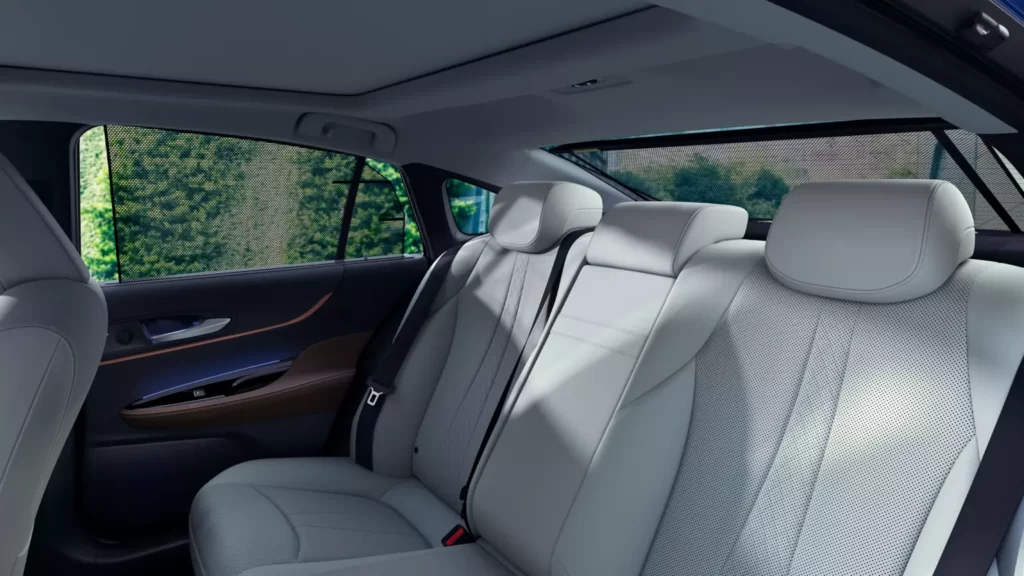
Zero Emission to Negative Emission:
According to Toyota ,the environmental benefit of driving the Toyota Mirai go beyond zero emissions to “negative emissions” which means that the car not only is built for zero emission, it actually effectively cleans the air as it moves, which is totally outstanding.
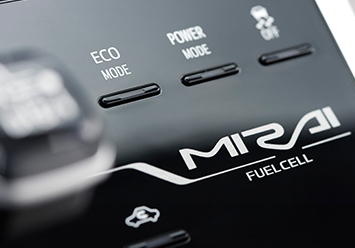
As per Toyota’s innovation, a catalyst-type filter is incorporated in the air intake. As air is drawn into the vehicle to supply the fuel cell, an electric charge on the non-woven fabric filter element captures microscopic particles of pollutants, including sulphur dioxide (SO2), nitrous oxides (NOx) and PM 2.5 particulates. The system is effective in removing 90 to 100% of particles between 0 and 2.5 microns in diameter from the air as it passes into the fuel cell system. Thus the air becomes cleaner if Mirai moves.
The Toyota Vision of Green Future:
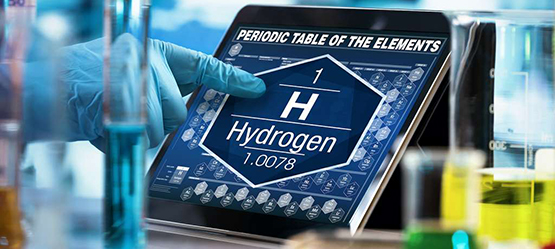
Toyota’s vision is the vision of a sustainable future in which the society recognises the value of hydrogen as a viable resource for carrying and storing energy that ultimately serves in zero carbon mobility not just in the roads but in trains, ships, aeroplanes and even in the industry, business and home. Toyota is equally concerned about the value of hydrogen as an efficient means of storing renewable energy that can be transported to where it’s needed.
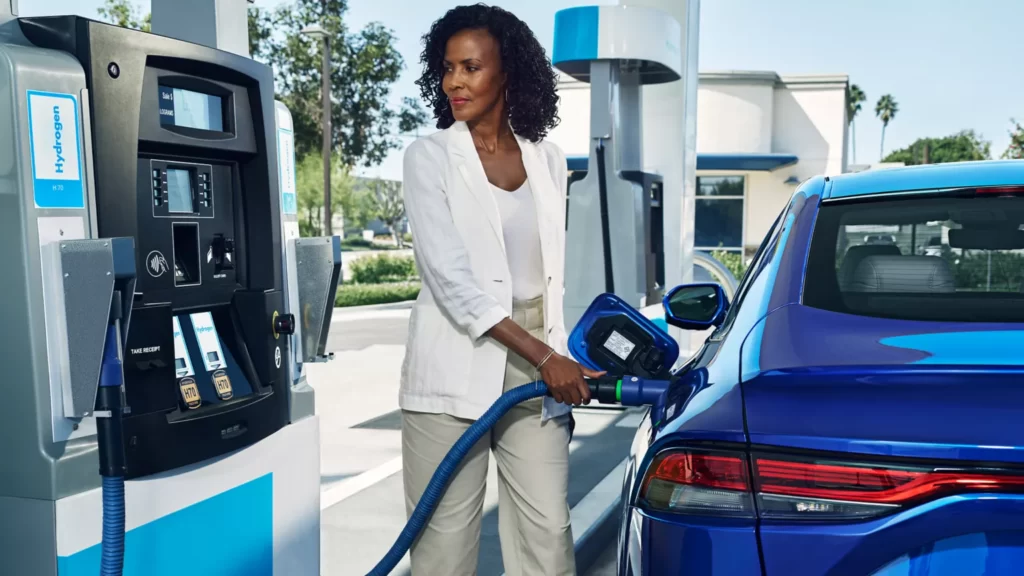
In Japanese the word “mirai” means future. with this vision of Future world that will never compromise with the greenery of earth, Toyota began developing hydrogen fuel cell electric vehicle in 1992 and successfully introduced the Mirai as a sedan to the world market in 2014. Now with the introduction of the new Murai 2022 the environment enthusiasts must be very happy.

(acknowledgement of information and images: Toyota Motor corporation)
